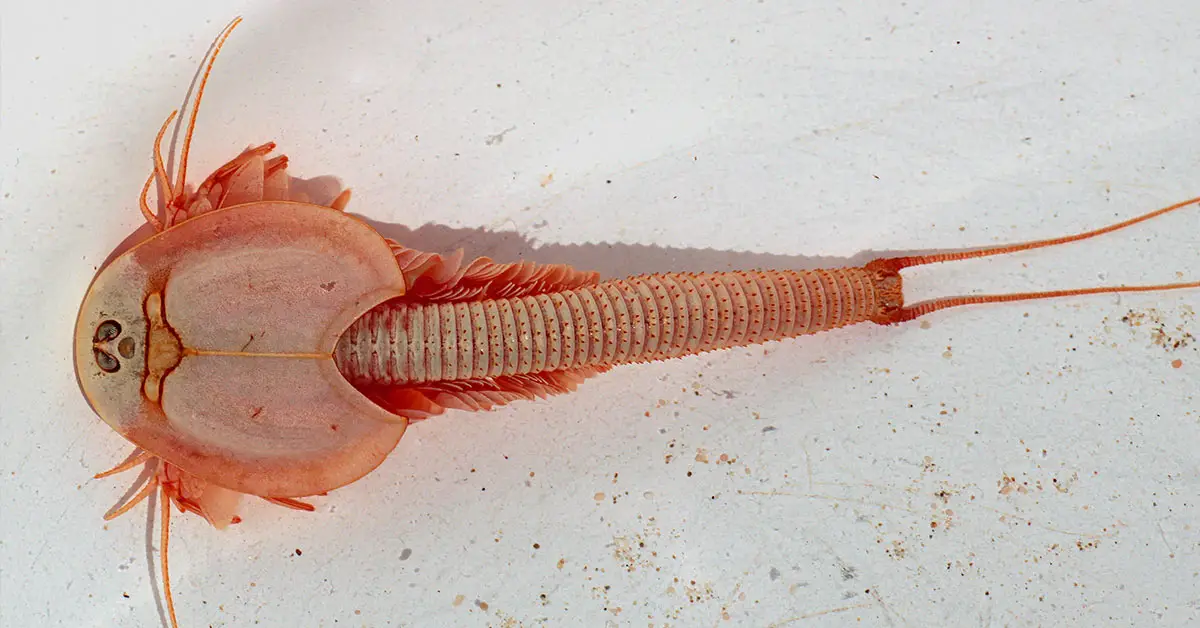With monsoons comes a lot of rain, but did you know they can also revive prehistoric creatures? This is just what happened in Wupatki, Arizona last month. A monsoon hit the desert area with enough water that it caused the eggs of this tiny creature to hatch for the first time in many, many decades. This creature, called the Triops, has been laying eggs in the Arizona soil since prehistoric times. (1)
Monsoon Causes Strange Prehistoric Creatures To Come To Life In Arizona
In September 2021, a monsoon hit Wupatki, Arizona. Normally a dry, desert-like area, the ground was suddenly filled with water. So much, in fact, that the ballcourt at the Wupatki National Monument Flooded to create a small pond. This water was sufficient enough to allow a creature to come to life that the staff of the park hadn’t seen in several decades: The Triops.
“We had a couple visitors that were like, hey you guys have fish in the ball court,” said Wupatki National Monument ranger Cathy Cooksey. “And we’re like, what?”
As mentioned, it is rare for the ballcourt to have water in it at all, let alone fish. Of course, what those park guests thought were fish were actually triops. These are tiny prehistoric creatures that have gone almost unchanged since the beginning of time. They lay their eggs in the sand, which then stay there dormant until the next heavy rainfall. In Arizona, this can mean decades.
Read: This Colorful Rosy Maple Moth Is an Eye-Catching Garden Visitor
The 2021 Arizona Triops Citing
If the pond created by the monsoon lasts long enough, the triops can live for up to 90 days. This gives them enough time to mate and lay another set of eggs, that will again stay dormant in the sand until the next storm. This pond, however, only lasted about one month. It is unclear as to whether or not this was sufficient time for these triops to lay new eggs or not. We won’t know until the next storm, which could be another few decades. (2)
“Just another example of long evolution figuring out how to survive the longest way they can,” Cooksey said. “They’re known as ancient fossils because they haven’t changed at all.”
She scoured the ground for triops skeletons left over after the pond disappeared. On the floor of the ballcourt, she found several of their small, shiny skeletons. This is an exciting, likely once-in-a-career opportunity to see these small creatures.
“I could have been here for 20, 30 years and not have seen these guys at all,”
More About The Triops
Arizona isn’t the only place you can find the triops. You can see them in Australia, Africa, Asia, South America, Europe, and of course in other places in North America. Typically, you will find them in temporary pools. In Japan, you can sometimes find them munching away on the weeds that grow in rice paddies.
They are often called prehistoric creatures simply because of when their ancestors evolved. Scientists believe that this took place between 419 and 359 million years ago, making them very much from a prehistoric era. This is before even the dinosaurs appeared, which was about 252 million years ago.
The little creatures still look more or less the same that they did all those hundreds of millions of years ago. That being said, they have evolved somewhat over time as any creature that has survived hundreds of millions of years on Earth would.
Triops are actually quite beneficial to the planet for several reasons. For one, as already mentioned, they do tend to eat weeds. This can be very helpful to farmers and gardeners alike. Secondly, they also eat mosquito larvae that are the culprits for spreading diseases such as West Nile Virus. This means that the triops can actually help curb the spread of this potentially fatal illness.
The triops has its name because it has three eyes. Despite that, their vision isn’t actually very good. They have many legs that they use for more than just walking. They actually use the legs as antennae, for breathing, and to carry food to their mouth. Often you’ll see them swimming upside down like shrimp. (3)
These small creatures grow very quickly and therefore eat a lot. They will even eat each other if no other food is available. They double in size every day until they reach adulthood which takes about two weeks. Their lifespan is very short, so they must grow and reproduce quickly to preserve their species. They live up to three months and grow to be between seven and 11 centimeters long.
Keep Reading: Woman finds 4.38-carat diamond at Crater of Diamonds State Park
Sources
- “Monsoons make underground creatures reappear after years.” 12 News. William Pitts. September 29, 2021
- “Arizona monsoon causes dormant eggs of three-eyed “prehistoric shrimp” to hatch.” The WeatherNetwork. Cheryl Sta Maria. October 6, 2021
- “Triops as Pets: How to Raise, Feed, Breed, Care for, and More.” Pet Helpful. Lady Rain. March 30, 2021.

